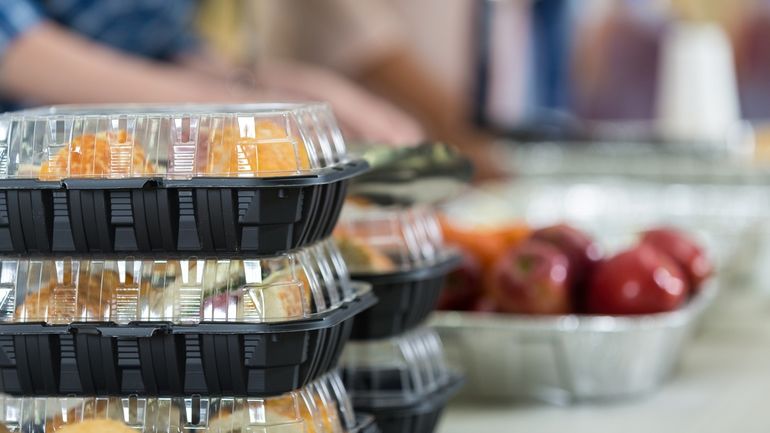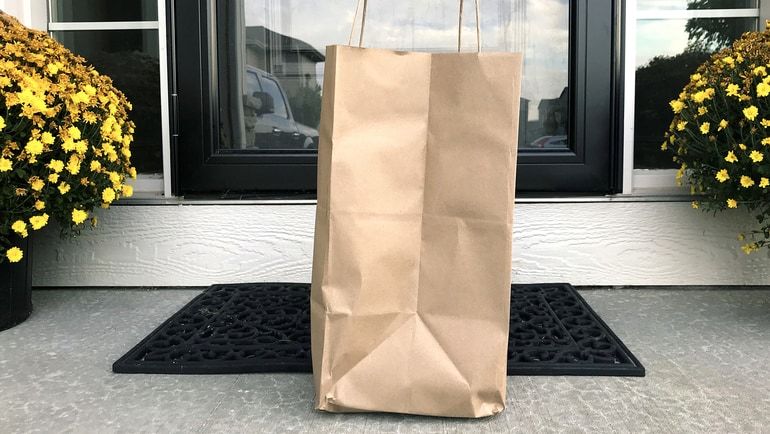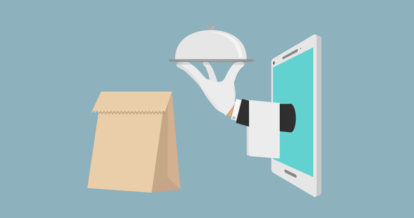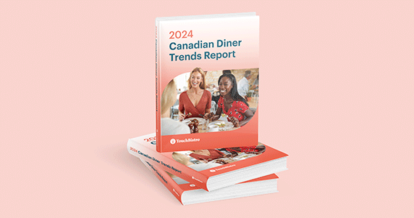The restaurant industry has been completely turned on its head, with restaurateurs facing circumstances they have never seen before. And as restaurant owners try to figure out how to run a business during a pandemic, they’re also helping their teams navigate the crisis, getting creative to support staff through COVID-19.
You’ll be glad to hear the answer isn’t just payouts. Here are some of the ways restaurants are supporting staff throughout COVID-19 – and how you can implement them at your business.
Paying Staff for Lost Hours
What It Looks Like
Every restaurant is dealing with COVID-19 differently, but some owners are choosing to pay employees for lost labour due to closed doors or limited hours.
One example of this practice is Castle Rock Brewery. The Nottingham-based brewery and pub group has launched a hardship fund to support its staff through the pandemic. The owners have vowed to cover 80% of employee wages in the months ahead – even if the government doesn’t follow through with the retention scheme (more on that below). Furthermore, there will also be a small money pot in case employees need access to emergency funds.
Obviously, not every restaurant owner is able to provide such support. But even if you can only afford a little bit, you should remember that a little will go a long way.
How You Can Do It
For most small business owners, the idea of paying all your staff while they sit at home is a nightmare, especially when there’s no income. Many restaurants could go under. Thankfully, the UK government is going to help restaurant owners and their employees through a new initiative called the Coronavirus Job Retention Scheme.
Chancellor of the Exchequer, Rishi Sunak revealed the government will cover 80% of employee wages, up to £2,500 per employee each month. This scheme will initially run for a period of three months, covering wages backdated to March 1st, and hopefully, it should kick in within the next few weeks.
This means you may not need to stretch the reserves for too long, but you will need a buffer period before the scheme takes the financial burden off your shoulders. In the meantime, business owners should do what they can for their employees.
Before you commit to anything, first check your finances. It may seem helpful to promise these grand gestures to your team to help make them feel better, but it’s not going to help you or them long term to just empty your bank account. Make sure you can still take care of yourself – you can’t pour from an empty glass.
Second, visit HMRC to check that you are eligible for the job retention scheme, then you’ll know how to proceed. Once you know your financial situation and are confident that you can afford to supplement employee wages for a while, you need to make a realistic plan. Before you announce anything, you’ll need to figure out:
- How long you’ll be compensating employees: Official advice on the HMRC website suggests the scheme won’t be up and running until the end of April. Therefore, your employees could be looking at a month without wages. In the meantime, how long can you keep paying them before the scheme takes over? One week? Two weeks? What’s more, is that the government has said the scheme is only for three months so far. Will you be able to help again after June? Give staff the heads up so they can prepare and budget their existing finances accordingly.
- How much you can compensate employees: Are you able to offer 50%, 75%, or 100% of their normal wages? Can you top up the other 20% on top of the 80% from the scheme? Be transparent about what your employees can expect.
Remember, there is NO shame in not going this route. It’s expensive and not always sustainable – a lot of businesses simply cannot afford this on a normal day, let alone in today’s climate.
Preparing Meals for Impacted Workers
What It Looks Like
Restaurants may have food going to waste because of closures – but it doesn’t have to spoil.
Some local restaurants are taking care of not just their staff but other industry workers who have been impacted by layoffs and cut hours. They’re making the most of unused inventory and empty kitchens to whip up free meals to give to people struggling financially right now.
Yanky Fisher is a co-owner of Asado bistro in Stamford Hill. When he heard how people were suffering from the impact of the virus, he felt compelled to help. One customer explained he had lost his driving job and his wife was bed-ridden at home, sickened by the virus. Their life had been turned upside-down, and now they were struggling to put food on the table.
Before long, Fisher heard lots of similar stories from families in the area. He decided to take action, and now Asado is sending out free meals to over 130 local families affected by coronavirus each day.
“The community has been good to me,” he explains, “so with the virus breaking out, I thought it was time to give back.”
How You Can Do It
First, you’ll want to take a look at your inventory and assess the level of support you are able to offer. Are you doing this just to get rid of current stock before it expires or does it mean more to you to provide the support?
Your answer will determine what you can offer, and how you present it to your employees. You may only have enough inventory to provide meals for a few weeks.
Next, determine who you want to do this for – it’s not realistic to provide meals for everybody. Consider starting with your own team, the ones directly impacted by fewer hours or closed dining rooms, then move to other people in the industry if you feel you can. The Punch Bar & Tapas in Honley is busy preparing meals for doctors, nurses and other staff, and is committed to sending out hundreds of meals each week for the next three months after the restaurant owners received a generous donation of £20,000.
Once you know how many meals you can produce and for whom, you can share the offer. Depending on the intended recipient, your method of sharing may change – whether it’s by telling your team to spread the message through word of mouth, email, or posting on social media. Just make sure all of your messaging is extremely clear in regards to who you are able to provide meals for, and how the system works. You want to avoid causing any confusion or disappointment in case someone gets the wrong end of the stick. Set clear expectations and continue communicating that message.

Pivoting Operations to Keep Doors Open – and People Employed
What It Looks Like
As people start taking social distancing more and more seriously, we’re seeing less and less physical traffic for pick-up at restaurants. Lunch rushes have essentially come to a complete halt, dining rooms are closed, and morning coffee runs have dwindled.
Businesses across the UK are taking this as a sign to change up their operations – at least for the time being – as a way to keep their doors open and their team in jobs. It’s a great way to support your team while trying to minimise the long-term financial impact of COVID-19. Businesses that are typically dine-in are working to pivot their operations to more takeaway and delivery, while the option is still available.
Since the pandemic hit UK shores, almost 3,000 restaurants have registered on Deliveroo to offer delivery to their customers. Even high-end restaurants like the Mumbai-inspired Irani cafe group Dishoom have joined the platform, alongside Vietnamese restaurant Song Que, and all of Gordon Ramsay’s London restaurants (except for three-Michelin-starred Restaurant Gordon Ramsay).
How You Can Do It
Whether it’s by focusing your efforts on takeaway and delivery or changing your menu to create packaged meals, see how these pivots can incorporate your current team to keep them financially supported.
If you decide to implement delivery, see if any of your front-of-house team members want to take a stab at delivery driving (just be sure to check with insurance providers about coverage). If you start offering meal prep kits, see if you can cross-train staff so their skills can be used in this new area.
Having open conversations with staff about these potential new roles or responsibilities will show them they’re supported and that all the business choices you make have them in mind.
Implementing Practices to Limit Contact
What It Looks Like
Supporting staff is about more than pay and free meals – it’s about creating a workplace where your team feels safe every day.
Any practices that you can implement to make them feel safer is a great – and free! – way to show your team they are supported. With the emphasis on social distancing and isolation right now, limiting contact between your team and diners is a great way to do just that. This is also super important to consider when you’re pivoting operations. You’ll still want to keep your staff feeling safe with any changes you make.
Restaurants across the UK are doing this in different ways. Some restaurants and coffee shops are doing all business exclusively through the takeaway window (if they have them) or letting people walk in to pick up and then leave right away. Shops are even limiting the amount of people allowed in the storefront. There is also a huge emphasis on takeaway and delivery practices that encourage limited contact.
Takeaway.com, the Dutch company that owns Just Eat and Deliveroo, recently announced their commitment to contactless delivery. Drivers are instructed to ring the doorbell and leave the food at the door, which makes these platforms a good option for restaurants right now – contactless delivery that customers want without needing to set up your own system.
How You Can Do It
Even if just for picking up a cup of coffee or takeaway meal, you could limit the amount of guests allowed in your venue at any time to minimise contact.
Switch up your takeaway and delivery practices, implementing pick-up or contactless delivery. You may also consider limiting the foot traffic in your venue, so there are only a few people in the shop at any one time when people come to collect their order. These types of arrangements help keep both your staff and your customers safe. However your diners are placing takeaway and delivery orders – by phone, website, or third-party app – make sure to implement a system that either informs them about your contactless system or asks them to input their preferences (if there are choices available).

Communicating Openly
What It Looks Like
Whatever of the above options you choose will mean a lot to your team – they want to feel supported. But your team needs to know what you’ve decided to do today, tomorrow, and into the future.
The key to this is communicating openly – and regularly. This may seem almost too simple, but think about it. If your gut instinct is to protect your team from what’s going on, you might not give them the full picture of what’s happening. But while they don’t need to know every detail, it’s important to keep them informed.
Depending on your concept, you’ll have to adjust what this looks like for your business. Maintaining strong internal communications while social distancing is a new skill all business owners need to learn. If you have a small team and relatively large premises, it may still be possible to conduct short in-person team meetings, with everyone taking the proper precautions to stand far apart. However, not everyone may be comfortable with this arrangement.
Now is as good a time as any to experiment with digital communications, as you can easily conduct a video conference for your team on apps like Zoom or Facetime. Slack or WhatsApp are excellent for group business chats. Failing that, the trusted methods of email and phone are always an option.
How You Can Do It
Implement a communications plan at your restaurant to ensure you’re communicating the right information to your team, at the right time. As things shift, you’ll want to be as open as possible with your team – within reason. Set expectations early on about when they’ll hear from you and how.
When you have a plan in place, it’ll be easier to know exactly how to share new information with your team each time something changes – which, let’s face it, has been often. It will also help alleviate some of the stress of trying to keep everybody up-to-date on a topic that changes so frequently.

Every restaurateur is in a tough spot. As a business owner, you have a whole team looking to you for answers. And when you opened your doors, this definitely wasn’t something you anticipated.
But you don’t need to have all the answers. All you can really do is try your best and take it day by day. Remember, you can’t support your team without first taking care of yourself. And whatever actions you can take to show your support will go a long way.
In the meantime, we want to help by arming you with the knowledge you need to get through this. Email us at [email protected] if there are any resources we can offer to help. You can see our existing COVID-19 resources here.







